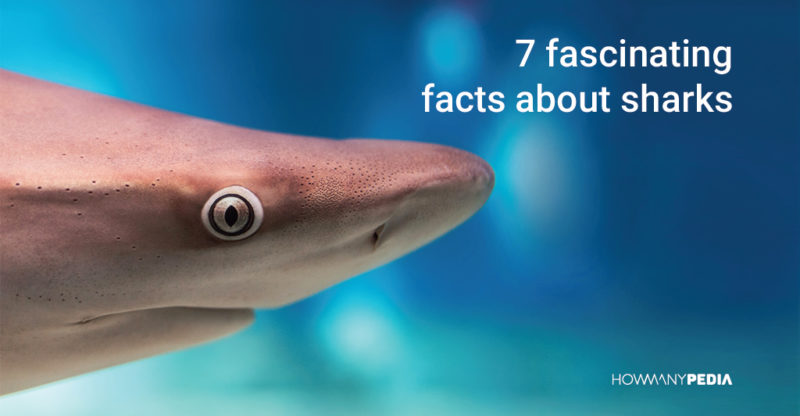7 Fascinating Facts About Sharks
Sharks are a vital part of the ocean ecosystem and the ocean’s top predators. There are nearly 400 species of sharks that belong to the class Chondrichthyes, the Greek word for “cartilaginous fishes,” because their skeletons are made of cartilage, not bone.
7 Fascinating Facts About Sharks
1. Sharks Life Span
Sharks have a relatively slow growth rate and many sharks have a life span of 20 to 30 years or more. The spiny dogfish holds the current record for lifespan of more than 100 years old.
2. Habitat
Shark habitats vary for each species, although most inhabit tropical, subtropical or temperate waters. Some sharks, like the blue and oceanic whitetip sharks, can be found far from land in the middle of oceans and many shark species live in the deep sea. Surprisingly, the bull shark, which is generally found in warm waters all over the world, has also been known to swim in freshwater lakes and rivers connected to the sea.
3. Feeding
Sharks feed on a variety of fish and other prey. The great white shark preys on large fish, seals, and other marine mammals. The tiger shark has been known to ingest almost anything, and nuts, bolts and tennis shoes have been found in their stomachs. These were probably cases of tiger sharks feeding on some man-made garbage thrown overboard at sea. Some sharks, like the whale shark, are non-aggressive filter feeders. The three species of sharks that do not use their teeth in the usual sense to feed are the basking, megamouth, and whale shark. Instead, these sharks use other means to filter the water for food. A shark’s tooth shape can indicate its diet and lifestyle.
4. Relatives
Close relatives of the sharks include rays, skates, and sawfishes, which also have cartilaginous skeletons.
5. Reproduction
About 30 percent of sharks are oviparous, which means the female sharks lay eggs containing developing embryos. The other 70 percent of sharks are viviparous and bear live young. The pregnancies of live-bearing sharks lasts 9 to 12 months. Male sharks can be identified by a pair of claspers attached to the back of their pelvic fins.
6. Defense
Most sharks have between 7 and 14 rows of teeth, which are continuously replaced. The thresher shark also uses its extra-long tail fin for defense and mobility. Many sharks are at the top of food webs in the ocean and their only predator – other than larger sharks – is man.
7. Conservation
Shark populations are declining due to the actions of humans. Harvesting sharks for food and other products has caused some shark populations to decline dramatically. The environmental effects of some pollutants found in shark tissues also can affect their health.
The number of sharks in ocean waters has mostly decreased in recent decades, yet shark attacks continue to cause fear in beachgoers. The International Shark Attack File contains records on known shark attacks from the mid-1500s to the present and conducts investigations and collects data worldwide when people are bitten. It’s important to remember that when we go swimming in the ocean we are entering the shark’s habitat. Although many people are frightened by sharks, you are more likely to be struck by lightning than attacked by a shark.

Did You Know?
Sharks have the same five senses as humans plus electro-sensitivity, which helps them find hidden prey by detecting its electrical field. The electroreceptors operate through small openings on the head that are filled with a jelly-like substance that allows the shark to detect these electrical fields.
Shark skin is made of teeth-like placoid scales called “dermal denticles,” which means “skin teeth.” These teeth are pointed backward to enhance shark speed and hydrodynamics.
Sharks maintain buoyancy with an oil-filled liver that provides lift in the water.
Sources:
- Castro, Jose I. 1983: The Sharks of North American Waters, Texas A&M University Press, College Station, Texas
- Clark, Eugenie. 1969: The Lady and the Sharks, Mote Marine Laboratory
- Discovery Channel: The Ultimate Guide to Sharks
- Parker, Steve and Jane. 1999: The Encyclopedia of Sharks, Firefly Books Ltd: Buffalo, New York
- University of Florida: International Shark Attack File



